
Roots
There exists within each strand of textured hair a memory, a resonance, an unbroken lineage that stretches back through time, reaching into the ancestral soil from which it sprang. For those who bear this crown, hair is rarely a mere adornment. It is, rather, a profound living archive, a repository of wisdom, struggle, and an unwavering spirit. To understand how textured hair symbolized defiance amidst the crushing weight of historical oppression, one must first delve into the very essence of its being, recognizing its biological marvel and its foundational place in the heritage of Black and mixed-race communities.

Hair Anatomy and Its Ancestral Meanings
The very architecture of textured hair—its elliptical follicle, the unique distribution of disulfide bonds that create its curl pattern, its propensity for shrinkage—is a biological testament to adaptation and resilience. These innate characteristics, viewed through a heritage lens, were not simply biological quirks. They were integral to survival in diverse African climates, providing thermal regulation and protection from the sun’s intensity. In ancient societies, this biological distinctiveness was celebrated.
Hair was revered, not merely for its aesthetic qualities, but as a connection to the divine, to one’s lineage, and to the community at large. Specific styles often served as a visual language, relaying crucial information about a person’s age, marital status, tribal affiliation, or social standing. (Essel, 2017) This reverence for natural hair, a gift from the source, formed the bedrock of identity long before external forces sought to dismantle it.
Textured hair, a biological marvel, held foundational significance as a living archive of heritage and identity in ancestral communities.

Understanding Hair Classification and Its Cultural Echoes
Modern hair typing systems, while useful for care, often struggle to fully capture the vast spectrum of textured hair. Historically, these classifications were not based on numerical patterns but on cultural meanings, on how hair signaled belonging and identity within specific communities. The advent of European colonialism and the transatlantic slave trade violently disrupted this intrinsic understanding. Eurocentric beauty standards, driven by notions of racial hierarchy, began to devalue Afro-textured hair, labeling it as “nappy,” “wooly,” or “matted,” comparing it to animal fur to justify dehumanization.
(Tshiki, 2021; Kilburn & Strode, 2021) This insidious discourse sought to strip individuals of their inherent worth, equating straighter hair with civilization and beauty, and coiled hair with inferiority. Yet, even in the face of such profound ideological assault, the memory of hair’s original significance persisted, a silent counter-narrative carried in every coil and kink.

The Language of Textured Hair from the Past
Within traditional African societies, the lexicon surrounding hair was rich and deeply symbolic. Terms described not only textures and styles but also the social rituals associated with hair care and adornment. Families often passed down specific styling methods through generations, linking hairstyles intimately to a family’s identity. (Teekens, 2021) Combs, often crafted from wood or bone, were not just tools; they were objects imbued with symbolic meaning, works of art in themselves.
This inherent value placed on hair and its care was systematically attacked during periods of oppression. Upon arrival in the “New World,” enslaved Africans frequently had their heads shaved, a brutal act intended to erase identity and sever connections to their homeland. (Thrifts & Tangles, 2021) This forcible shearing was an early, stark attempt to dictate a new lexicon of degradation. However, even in this violent erasure, the spirit of ancestral practices whispered, waiting for the opportune moment to reassert itself, transforming silence into a powerful voice.
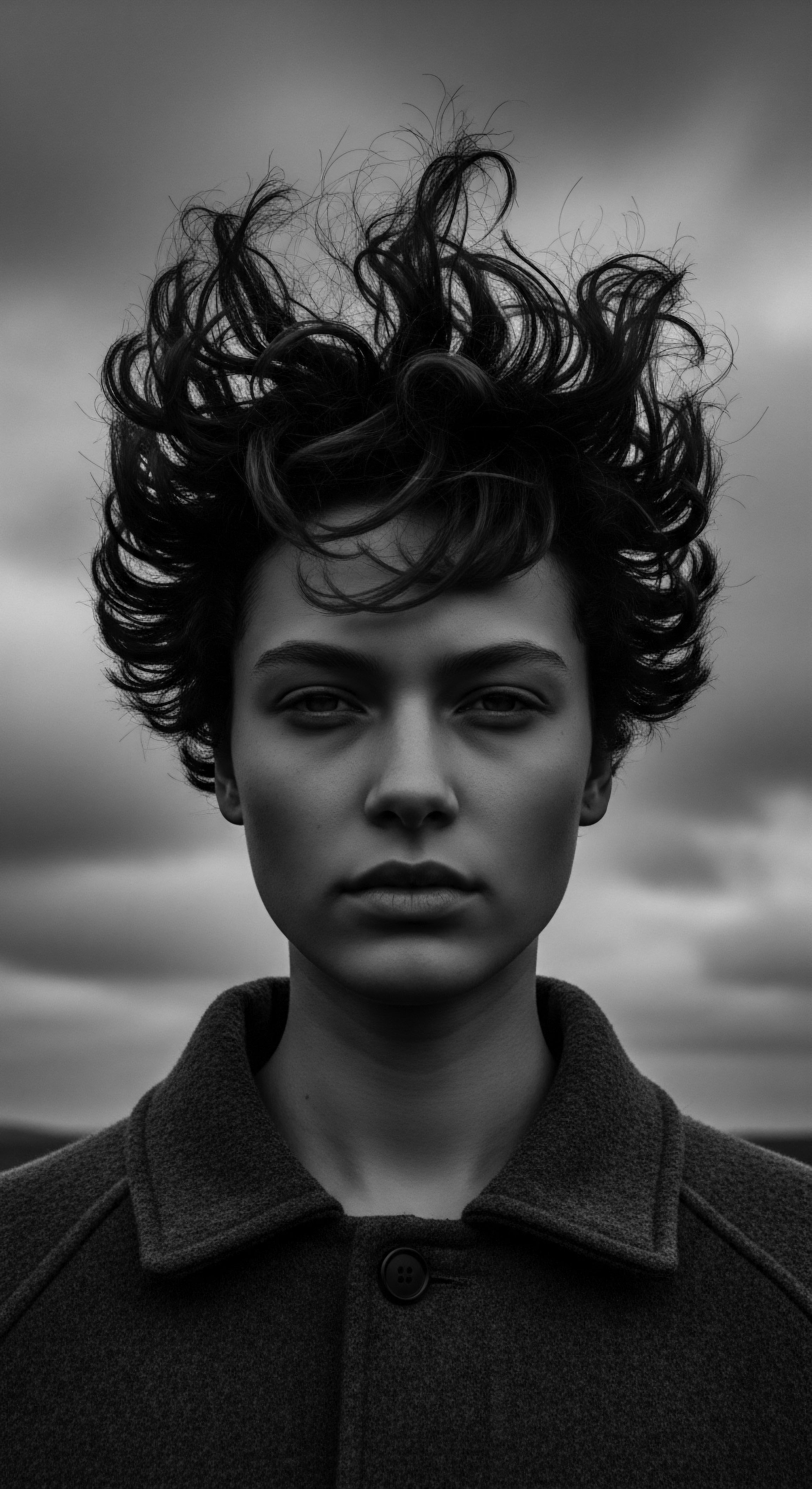
Ritual
The practices surrounding textured hair—the styling, the adornment, the communal gathering—were never mere aesthetic choices. They were acts of profound cultural preservation, rituals that sustained spirit and identity through generations. When oppression sought to dismantle Black and mixed-race cultural structures, these rituals of hair care transformed, subtly at first, then boldly, into declarations of resistance. The very act of manipulating coils and strands, of nurturing what was deemed “unruly,” became a quiet, then a vibrant, act of self-sovereignty.
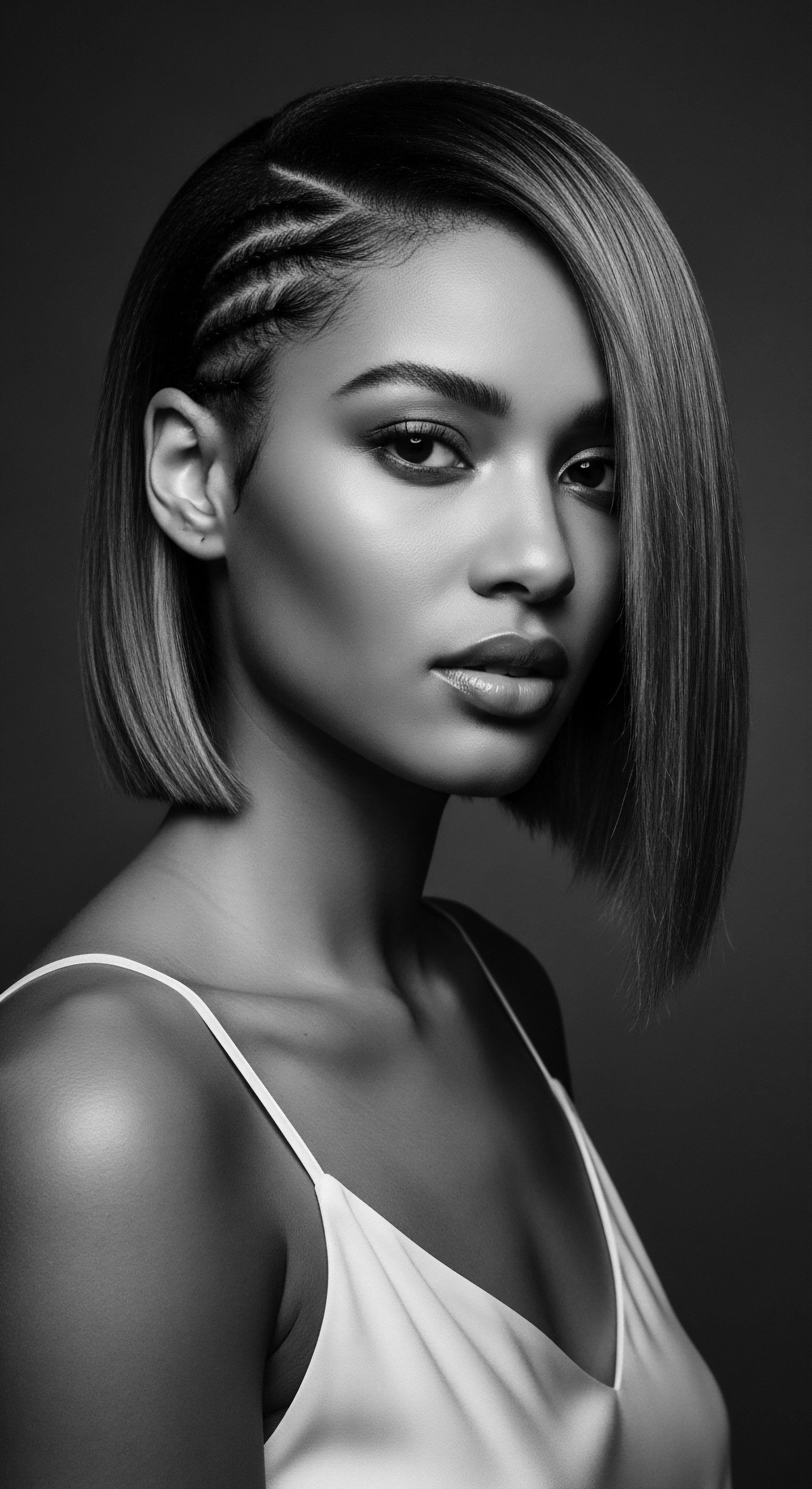
Styling Techniques as Echoes of Ancestry
From the ancient cornrows that mapped out social status and tribal affiliation to the intricate Fulani braids adorned with shells, styling techniques represent a vast heritage. (The Braid Gallery, 2025) These were not just modes of personal adornment; they were sophisticated forms of communication and communal artistry. During enslavement, when overt expressions of African heritage were brutally suppressed, these styling methods took on clandestine meanings. Enslaved women, with remarkable ingenuity, used their hair as a covert means of conveying information.
Cornrows, for instance, were artfully constructed to depict escape routes or to hide grains and seeds, vital for survival during flight from plantations. (The Braid Gallery, 2025; Thrifts & Tangles, 2021) This transformation of styling into a tool of literal liberation speaks volumes about hair’s potent symbolism. The preservation of these techniques, often passed down in hushed tones from elder to youth, was a defiance against an imposed cultural amnesia, a steadfast refusal to forget.

Natural Styling and The Language of Definition
The journey of defining and celebrating natural texture extends beyond mere aesthetics; it reaches into the heart of self-acceptance and a rejection of imposed beauty norms. For centuries, pressure to conform to Eurocentric ideals led many to alter their hair with chemical straighteners or hot combs, methods that often damaged the hair’s inherent structure. (Noma Sana, 2024; Kilburn & Strode, 2021) This phenomenon was not simply a stylistic preference; it was often a survival tactic, a way to navigate societal prejudices and gain access to opportunities in education and employment.
(Noma Sana, 2024; The Curl Boutique, 2022) Yet, within this landscape of conformity, there always existed a quiet current of resistance, expressed through the subtle yet deliberate choice to maintain natural patterns. This subtle act of self-definition held immense power, a quiet whisper against the dominant narrative, preserving the authentic expression of heritage.
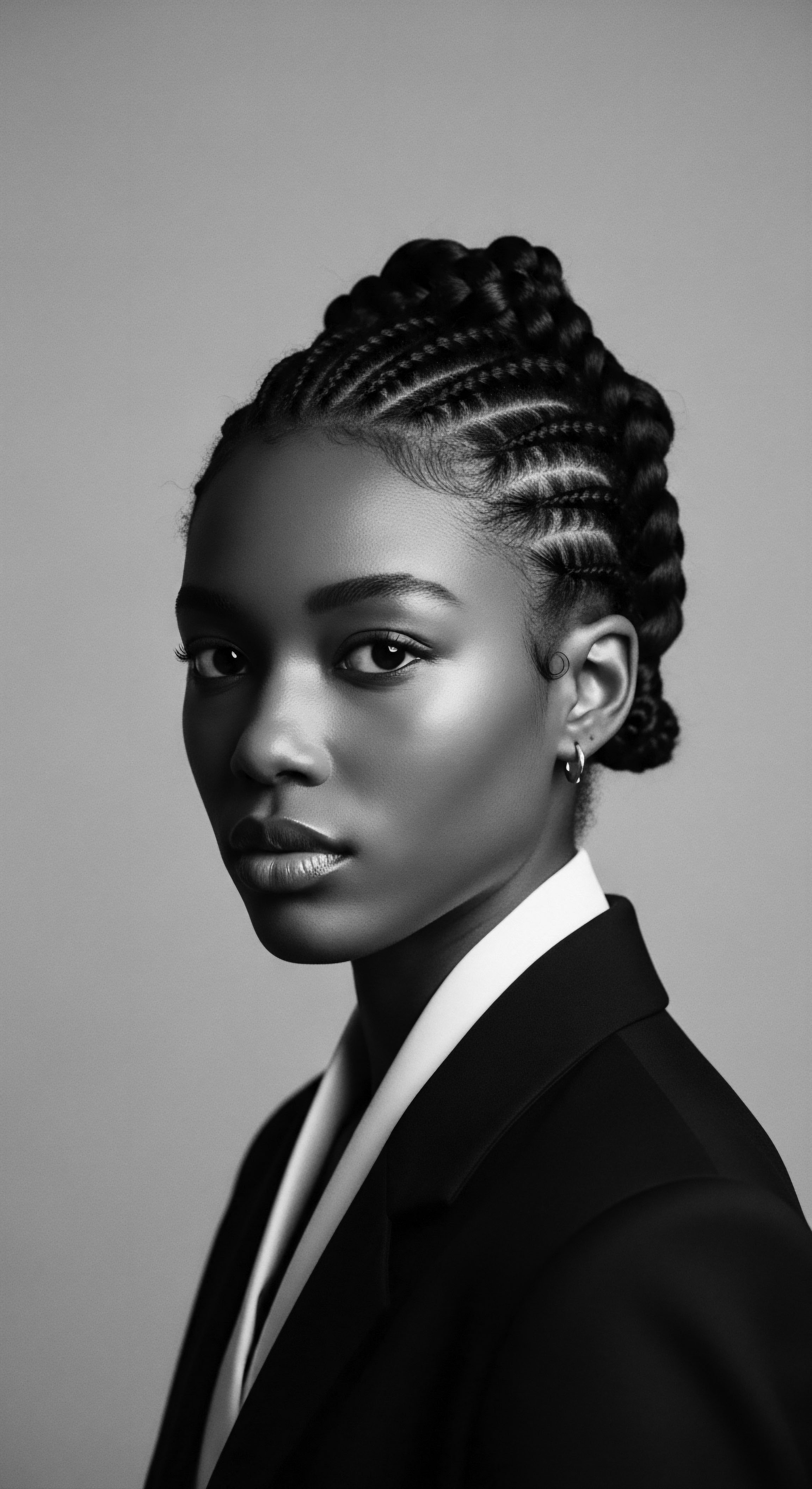
The Legacy of Wigs and Hair Extensions
While often seen as modern fashion statements, wigs and hair extensions also possess a layered history within Black and mixed-race hair traditions. In some ancestral African cultures, hair additions were used for ceremonial purposes or to denote status, serving as symbols of wealth or spiritual connection. The colonial era and subsequent systems of oppression introduced a different dynamic, where wigs and extensions sometimes became tools for assimilation, enabling individuals to align with prevailing beauty standards. However, the use of these elements also demonstrates a capacity for innovation and self-expression, adapting existing practices to new realities.
They represent a complex interplay of heritage, adaptation, and the creative pursuit of beauty, even when constrained by external pressures. This ongoing adaptability speaks to a resilience in maintaining a connection to hair practices, even if their context shifted over time.
Hair rituals, from secret braided maps to choices of natural definition, transformed into subtle and overt acts of defiance against oppression.
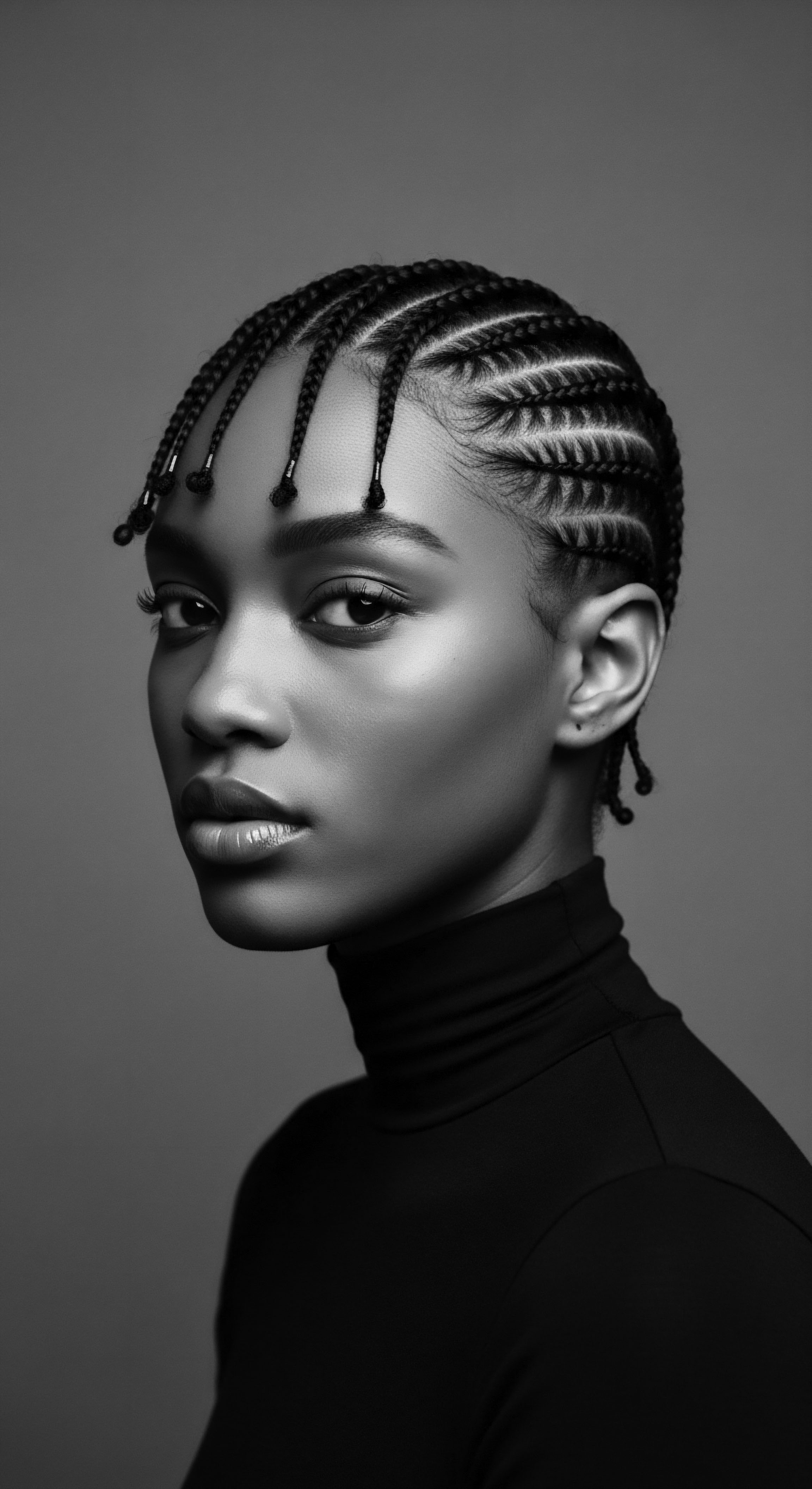
The Textured Hair Toolkit and Its Enduring Wisdom
The tools associated with textured hair care hold a special place in its heritage. Beyond their functional purpose, combs, picks, and various implements carried the weight of tradition. Traditional African societies crafted combs from natural materials, imbuing them with symbolic meaning. These tools were central to the communal practice of hair grooming, an activity that strengthened familial and social bonds.
(Thrifts & Tangles, 2021) In times of oppression, the simple act of maintaining and using these tools, or adapting them, became a tangible link to a past that oppressors sought to erase. They represent a continuity of practice, a quiet yet potent reminder of a heritage that could not be fully extinguished. The ingenuity in creating and using these tools, often in harsh conditions, underscores a tenacious spirit of self-care and cultural preservation.
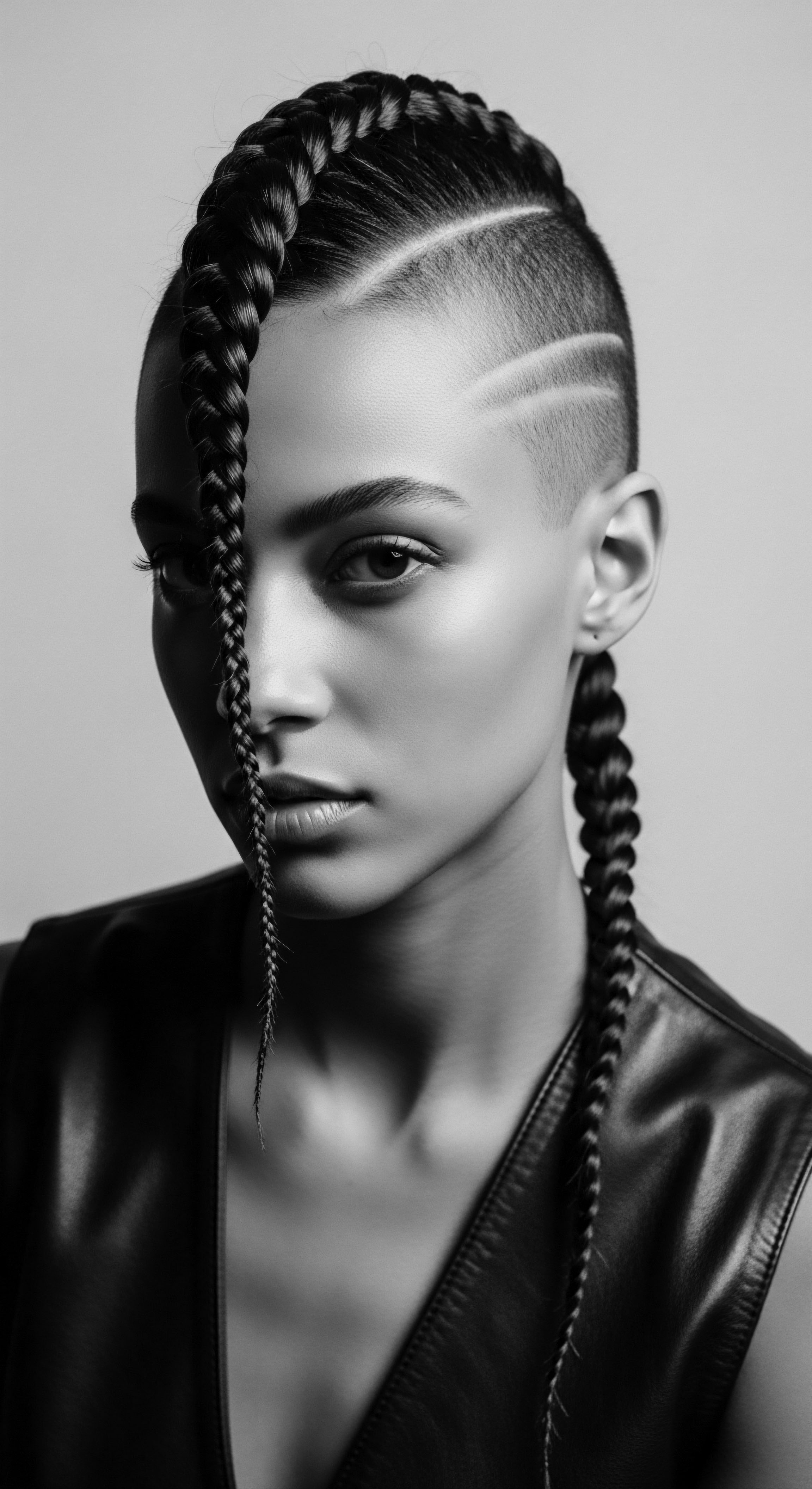
Relay
The historical relay of textured hair as a symbol of defiance carries forward into contemporary understanding, revealing deep connections between ancestral wisdom, scientific insight, and continued acts of self-determination. This is where the enduring spirit of Roothea’s ‘Soul of a Strand’ truly comes alive, recognizing hair not as a static historical artifact, but as a dynamic, living testament to resilience. The complexities of this legacy demand a nuanced exploration, moving beyond surface observations to uncover the profound interplay of identity, biology, and socio-political landscapes.

The Science of Structure, The Story of Spirit
Textured hair possesses unique structural properties, from its coiled, elliptical shaft to its distinct cuticle arrangement. These biological characteristics, once misunderstood or even disparaged by Eurocentric beauty standards, are now celebrated for their inherent strength and beauty. Modern trichology validates what ancestral wisdom always understood ❉ that textured hair requires specific care that honors its natural inclinations. For generations, traditional practices—such as protective styling, oiling the scalp, and using plant-based emollients—were rooted in an intuitive understanding of these very needs.
These practices, often dismissed as primitive, find modern validation in scientific research on moisture retention, elasticity, and scalp health. The continued embrace of these traditional approaches, despite centuries of conditioning to suppress them, represents a sustained act of defiance. It is a conscious reclaiming of indigenous knowledge, asserting that the inherent biology of textured hair is not a deficit, but a source of power and heritage.

A Legacy of Resistance Through Hair Choices
The most compelling narratives of defiance are found in the deliberate choices made about hair, particularly during periods of overt oppression. Consider the context of the Mau Mau Rebellion in Kenya (1952-1960), a pivotal uprising against British colonial rule. During this period, both men and women embraced the growing of their hair into dreadlocks as a powerful act of rebellion. Colonial authorities, who had long demonized African hair, viewing it as unkempt and uncivilized, intensely “dreaded” this visual assertion of identity.
(Tshiki, 2021) The very word “dreadlocks” is believed by some to have originated from the colonists’ fear and disdain for these defiant styles. Individuals wearing dreadlocks faced severe persecution, including physical assault and even death. (Tshiki, 2021) This historical example vividly illustrates how a hairstyle, intrinsically tied to heritage and spiritual symbolism for many, became a direct challenge to colonial power, a visible refusal to conform to imposed standards of appearance and submission. The choice to wear one’s hair in its natural, untamed form was a declaration of sovereignty, a visible emblem of a fight for freedom.
Another striking example comes from the era of chattel slavery in the Americas. When enslaved Africans arrived, their heads were often shaved in a deliberate act to strip them of identity and communal ties. (Thrifts & Tangles, 2021) Yet, ancestral knowledge endured. Enslaved women ingeniously used intricate braid patterns, especially cornrows, as covert maps to freedom.
These patterns held secret messages, indicating escape routes through plantations and landscapes, or even hiding seeds for sustenance on long, perilous journeys. (The Braid Gallery, 2025; Teekens, 2021; Noireônaturel, 2024) This was a profound and silent act of defiance, using hair as a literal tool for survival and liberation under the very gaze of their captors. The meticulous detail in these braids, the communal act of their creation, and the knowledge they encoded represent a deep well of ancestral ingenuity and an unyielding will to resist.
From the Mau Mau defiance of dreadlocks to the coded braid maps of enslaved women, textured hair was a powerful medium of silent and overt resistance.
The mid-20th century saw another powerful resurgence of textured hair as defiance with the Civil Rights Movement and Black Power Movement in the United States. The Afro became a dominant symbol, a bold rejection of Eurocentric beauty standards and an unequivocal assertion of Black pride and identity. (Noma Sana, 2024; The Curl Boutique, 2022) Icons like Angela Davis wore their Afros not merely as fashion statements, but as profoundly political acts, embodying a call for liberation and self-acceptance. (CREAM, 2021) This period marked a collective turning away from chemical straighteners, which had long been seen as a means of assimilation, towards a celebration of natural texture as a sign of cultural strength and unity.
The public wearing of the Afro was a direct challenge to a society that had long deemed natural Black hair as unprofessional or unkempt. This shift was more than cosmetic; it was a re-calibration of self-worth and a powerful visual manifesto for racial justice and cultural autonomy. It demonstrated how deeply hair is interwoven with concepts of freedom and collective identity.
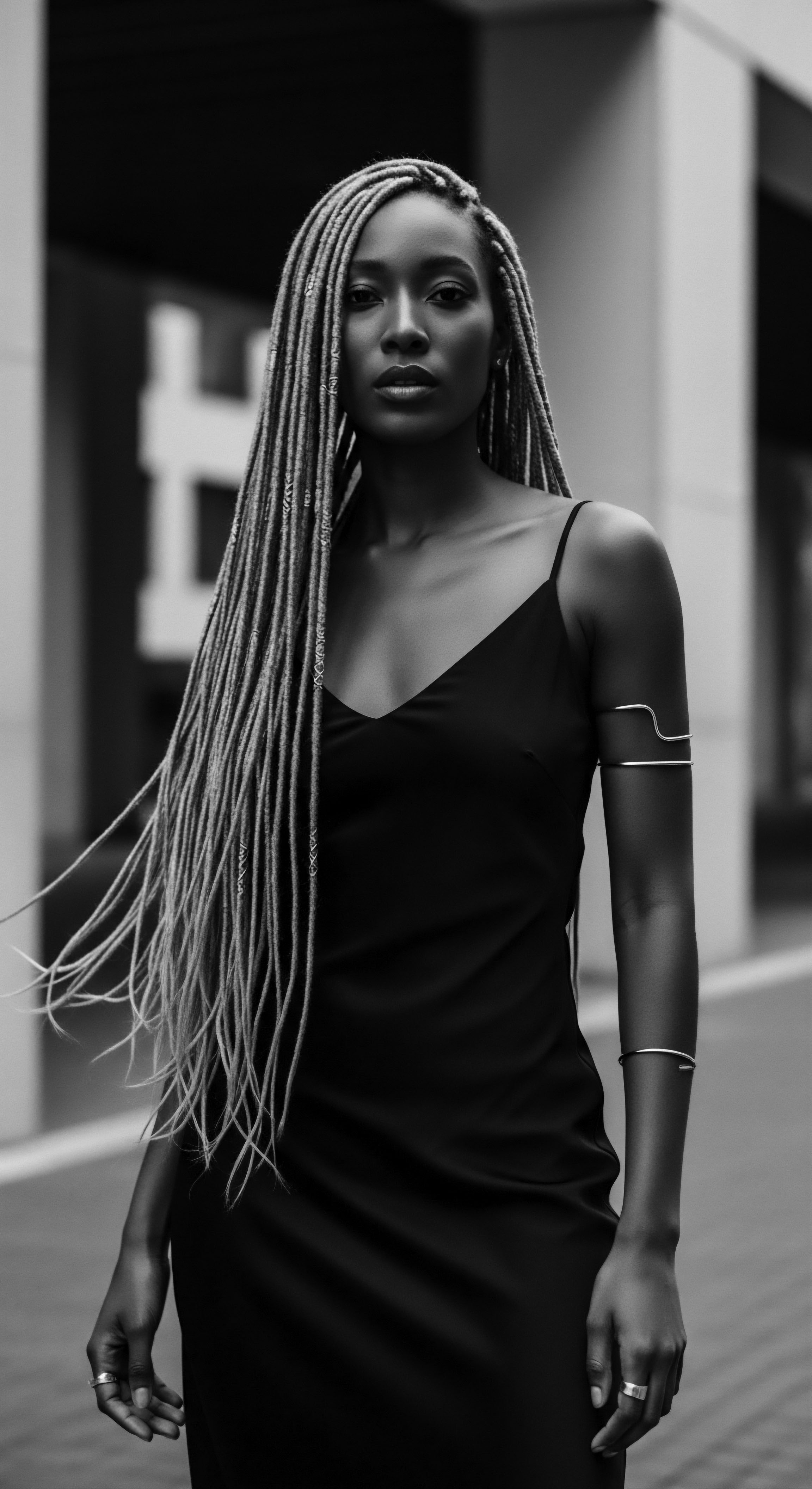
Addressing Discrimination and Upholding Heritage
The fight for hair acceptance continues in modern times, underscoring the enduring legacy of historical oppression. Discriminatory policies in schools and workplaces often target natural textured hair, deeming styles like dreadlocks or Afros as “unprofessional” or “distracting.” (The Curl Boutique, 2022) This echoes the colonial-era attempts to control and demean Black hair, revealing how systemic biases persist. The emergence of legislation like the CROWN Act in the United States, which bans discrimination based on hair texture and protective styles, is a direct response to this ongoing prejudice.
(The Curl Boutique, 2022) These legal battles affirm that the choice to wear one’s hair naturally is a fundamental expression of identity and cultural heritage, a right that must be protected. The legislative efforts, driven by community advocacy, highlight that the act of embracing textured hair remains a contemporary act of defiance against systemic oppression, building upon the foundations laid by generations of ancestors who resisted in their own ways.
| Era and Context Transatlantic Slave Trade |
| Hair Practice of Defiance Braided maps and hidden sustenance |
| Heritage Significance Clandestine communication, survival, cultural continuity |
| Era and Context Colonial Rule (e.g. Mau Mau Rebellion) |
| Hair Practice of Defiance Wearing dreadlocks |
| Heritage Significance Assertion of identity, spiritual connection, rejection of colonial norms |
| Era and Context Civil Rights Movement |
| Hair Practice of Defiance The Afro hairstyle |
| Heritage Significance Symbol of Black pride, political statement, rejection of assimilation |
| Era and Context Contemporary Era |
| Hair Practice of Defiance Natural hair movement, CROWN Act advocacy |
| Heritage Significance Self-acceptance, legal protection against discrimination, ancestral reverence |
| Era and Context Each era demonstrates textured hair's profound connection to liberation struggles and the preservation of cultural heritage. |
The journey of textured hair is a testament to the unyielding spirit of those who wore it, a relay of resistance passed from one generation to the next. From clandestine braided maps to the defiant Afro, hair has consistently served as a canvas for identity and a banner for liberation. It is a story told not only in historical records but in the living, breathing coils and crowns that grace heads today, each one a whisper of ancestral wisdom, a shout of enduring pride.
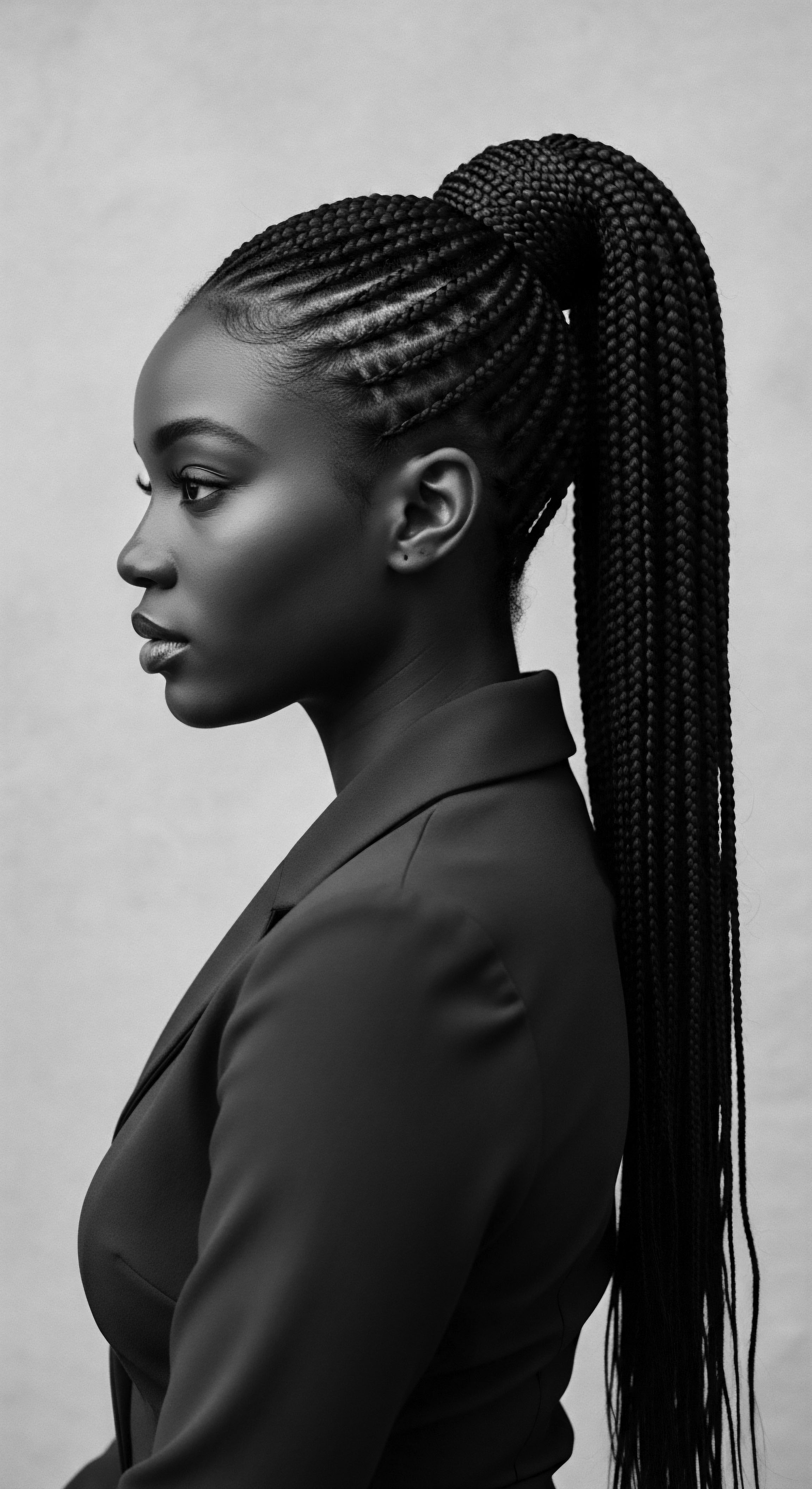
Reflection
As we contemplate the extraordinary journey of textured hair through periods of profound oppression, a deeper truth emerges ❉ the very existence of these strands, in their natural, unyielding form, embodies a profound meditation on enduring heritage. It stands as a living testament, a silent yet powerful archive that speaks volumes beyond words. The ‘Soul of a Strand’ ethos, with its reverence for ancestral wisdom, finds its fullest expression in this historical narrative. Hair, for Black and mixed-race communities, has always been more than mere biology; it is a spiritual conduit, a cultural anchor, and an unwavering symbol of identity.
The act of nurturing textured hair, whether through ancient rituals or contemporary self-care, is an act of communion with a resilient past. It is a profound acknowledgment of the strength that allowed ancestors to transform tools of subjugation into emblems of freedom. Every coil and curl, when honored and celebrated, whispers stories of ingenuity, perseverance, and an unbreakable connection to the source. The journey of textured hair, from elemental biology to a beacon of defiance, is an ongoing narrative, a continuous relay that shapes futures while forever honoring its luminous, defiant past. It reminds us that beauty, when rooted in heritage, becomes an unbreakable force.

References
- Byrd, Ayana D. and Lori L. Tharps. Hair Story ❉ Untangling the Roots of Black Hair in America. St. Martin’s Press, 2014.
- Collins, Patricia Hill. Black Feminist Thought ❉ Knowledge, Consciousness, and the Politics of Empowerment. Routledge, 2000.
- Dabiri, Emma. Don’t Touch My Hair. Harper Perennial, 2020.
- Essel, Osuanyi Quaicoo. “Conflicting Tensions in Decolonising Proscribed Afrocentric Hair Beauty Culture Standards in Ghanaian Senior High Schools.” Journal of Education and Human Development, vol. 6, no. 3, 2017, pp. 24-34.
- Matjila, Chéri R. The Meaning of Hair for Southern African Black Women. University of the Free State, 2020.
- Patterson, Orlando. Slavery and Social Death ❉ A Comparative Study. Harvard University Press, 1982.
- White, Luise. Speaking with Vampires ❉ Rumor and History in Colonial Africa. University of California Press, 2000.
